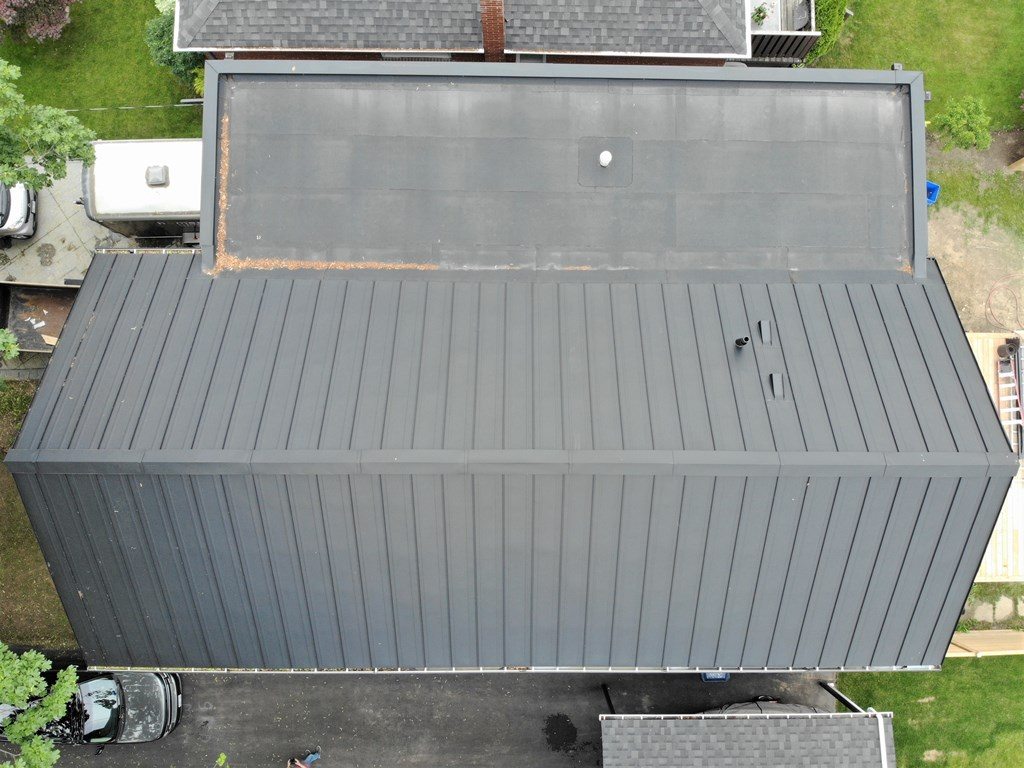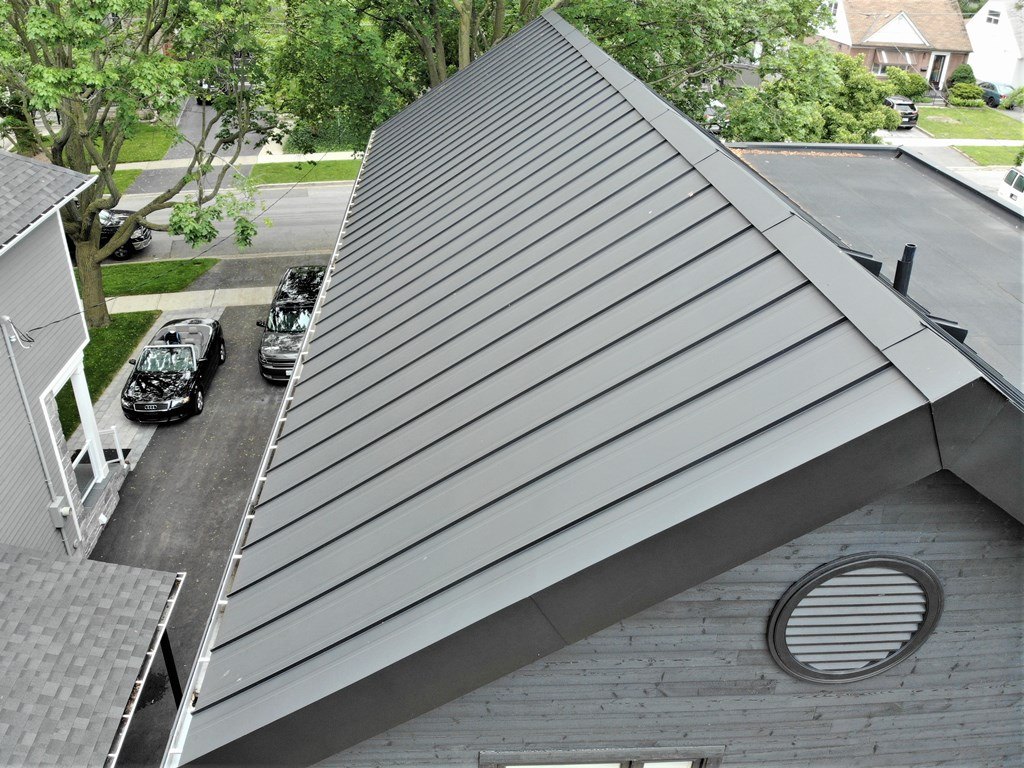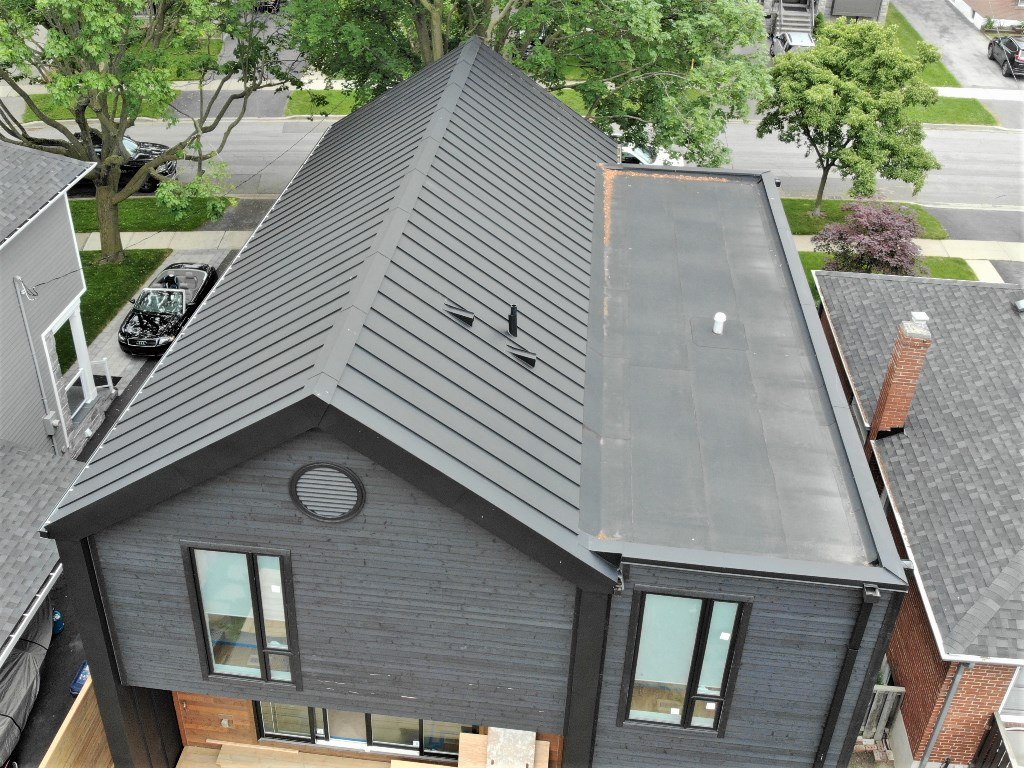Below you will find information about traditional standing seam metal roof.
Standing seam metal roof is the revival of the classic tradition with the achievements of modern technology. Classic style never goes out of fashion. This statement is true both in terms of appearance style and architecture style.
The classical metal roof became a part of everyday life several centuries ago. And if we are talking about the old town, we immediately recall then two-three-story cozy houses with iron roofs.
Traditional standing seam metal roof still serves the owners throughout the world, and there are good reasons partially mentioned above why roofs are considered among the most reliable of all types of roof. Back in the day the owners of metal roofs were looked upon as prosperous by people and standing seam metal roofs were considered prestigious.
But time does not stand still. There came corrugated deck and then a metal tile. They also stepped into the market, but traditional standing seam was not forgotten. The roofs are covered with metal in the old-fashioned way in the places where special reliability or classic appearance is required.
Among various types of roofs on the market today, the standing seam metal roof stands out in its popularity. It is not only the durability, look or energy save factor (standing seam will help to keep your solar temperatures down), but also the simplicity and speed of installation. Let’s technically dwell on standing seam metal roof further below.
Standing seam is one of the most reliable types of roofing systems. The name of the system implies a special seam at the junction of metal sheets. The fasteners are tightened with the help of clamps, by means of hidden connection, due to which the standing seam roof has no holes for letting the moisture in. If the length of the slope exceeds 26 feet (8 meters), the constructive decision obliges the use of “floating” clamps. At the same time the main elements of the roof – panels – have specifically prepared edges to ease the installation.
The seam is standing has several attachment types for various styles and applications. Usually, the vertical edges of the panels are joined by a standing seam, and the horizontal parts – by recumbent ones. The roof panel can be of almost any length, so you can eliminate the use of horizontal folds and transverse overlaps. Seams are fixed in the lock (rolled) manually with special tools or with the help of special electromechanical sealing tools (folding equipment). A single standing seam may be of a self-snapping type. The most airtight and waterproof joint of panels is a double standing seam since its edges have a double bending mechanism.








